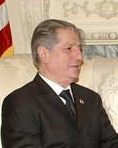Lebanese general election, 2009
|
|
|||||||||||||||||||||||||||||||||||||||||||||||||||||||||||||||||||||||||||||||||||||||||||||||||||||||||||||||||||||||
|---|---|---|---|---|---|---|---|---|---|---|---|---|---|---|---|---|---|---|---|---|---|---|---|---|---|---|---|---|---|---|---|---|---|---|---|---|---|---|---|---|---|---|---|---|---|---|---|---|---|---|---|---|---|---|---|---|---|---|---|---|---|---|---|---|---|---|---|---|---|---|---|---|---|---|---|---|---|---|---|---|---|---|---|---|---|---|---|---|---|---|---|---|---|---|---|---|---|---|---|---|---|---|---|---|---|---|---|---|---|---|---|---|---|---|---|---|---|---|---|
|
|||||||||||||||||||||||||||||||||||||||||||||||||||||||||||||||||||||||||||||||||||||||||||||||||||||||||||||||||||||||
|
All 128 seats to the Parliament of Lebanon |
|||||||||||||||||||||||||||||||||||||||||||||||||||||||||||||||||||||||||||||||||||||||||||||||||||||||||||||||||||||||
|
|||||||||||||||||||||||||||||||||||||||||||||||||||||||||||||||||||||||||||||||||||||||||||||||||||||||||||||||||||||||

Areas with a March 14 majority in blue, areas with a March 8 majority in orange
|
|||||||||||||||||||||||||||||||||||||||||||||||||||||||||||||||||||||||||||||||||||||||||||||||||||||||||||||||||||||||
|
|||||||||||||||||||||||||||||||||||||||||||||||||||||||||||||||||||||||||||||||||||||||||||||||||||||||||||||||||||||||
Parliamentary elections were held in Lebanon on 7 June 2009.
Prior to the election, the process to lower the voting age from 21 to 18 years was put into motion, but as this requires a constitutional amendment, it did not happen before the election.
Following a compromise reached in the Doha Agreement on May 2008 between the government and opposition, a new electoral law was put in place, as shown in the table below. It was passed on 29 September 2008.
according to The Doha Agreement
Preliminary results indicated that the turnout had been as high as 55%. The March 14 Alliance garnered 71 seats in the 128-member parliament, while the March 8 Alliance won 57 seats. This result is virtually the same as the result from the election in 2005. However, the March 14 alliance saw this as a moral victory over Hezbollah, who led the March 8 Alliance, and the balance of power was expected to shift in its favor. Many observers expect to see the emergence of a National Unity Government similar to that created following the Doha Agreement in 2008.
As is typical of Lebanese politics political wrangling after the elections took 5 months. Only in November was the composition of the new cabinet agreed upon: 15 seats for the March 14 Alliance, 10 for the March 8 Alliance, and 5 nominated by Lebanese President Michel Suleiman, who has cast himself as a neutral party between the two main political blocks.
The government fell in January 2011 after the March 8 alliance's 11 ministers withdrew from the government over PM Hariri's refusal to convene a cabinet meeting to discuss possible indictments to be issued by the Special Tribunal for Lebanon.
...
Wikipedia








